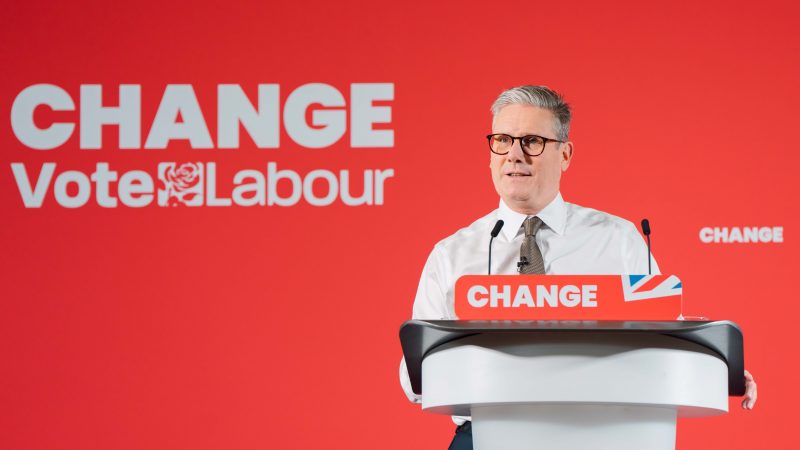
LabourList and Headland Consultancy have launched an interactive UK constituency map showing Labour’s range of candidates across the country, the swing required to win, recent polling and the current MP in each seat, and which seats look most crucial in the party’s bid for power.
The interactive map aims to be a one-stop-shop for important information voters, activists and the politically engaged across the UK will find useful as the election campaign kicks into gear.
It builds on LabourList’s wider work in the run-up to the general election, including a rolling list of parliamentary candidates selected so far featuring short biographies, and another list of MPs standing down.
It lays bare how steep a mountain the party has to climb from 2019 to reclaim areas like the red wall, but points as well to potential surprise winners in some traditional Tory heartlands on a good night for Labour.
The map also highlights the final seats where Labour is yet to select a candidate for the July 4 election, a combination of seats where MPs are standing down, former Labour MPs have been suspended and some key battleground contests.
According to LabourList‘s analysis, Labour had around 20 candidates left to select for the general election as of Tuesday, with almost all being to fill vacancies from incumbent MPs retiring from the House of Commons.
Toby Pellew, Head of Public Affairs at Headland, said: “Our map is the definitive guide to every battleground Labour intends to fight in the General Election. We hope it is a valuable tool for anyone looking to understand and engage with the Labour party and the new cohort of Labour MPs which look set to enter the Commons in July.
“Although the party has been leaps and bounds ahead in the polls, we shouldn’t underestimate the scale of the challenge Keir Starmer is taking on. His party needs a national swing of over 12% to win with even a small majority. That’s a record not even accomplished by Tony Blair.
“Nonetheless, Labour is well-prepared, with candidates already selected in almost all the seats it plans to fight for. By using our map, you can see where the biggest fights will be and who will be leading the charge in each constituency.”
READ MORE: Rolling list and biographies of all Labour candidates selected so far
Daniel Green, the LabourList reporter who created the map, said: “This map gives you an at-a-glance view of all the information needed to evaluate Labour’s and its candidate’s prospects in every seat on July 4th.”
“The visualisation of the seats Labour would have won in 2019 demonstrates the low base the party is fighting from, but Labour does have a very clear path to power.”
Tom Belger, editor of LabourList, said: “There’s so much at stake this election, and LabourList wants to play our part as the leading independent platform for all things Labour.
“This map should be a hugely useful resource – both for anyone interested in seeing who might be part of the class of 2024 of new MPs that will shape the next parliament, and for anyone interested in making sure that actually happens – by working out which candidates near them need most support.
“We want to give this historic election the coverage it deserves, so if any readers or potential partners have further ideas for resources we could provide, please get in touch.”
READ MORE: What are Labour’s policies for pensioners?
The map also shows the 403 seats Labour was projected to win in a recent MRP poll by YouGov, with the Conservatives on 155, the Liberal Democrats with 49 and the SNP 19.
Based on the new constituency boundaries, Labour would have won 200 seats in 2019 – two fewer than the party won in 2019. While the party would have lost Kingston upon Hull West and Haltemprice, held by Emma Hardy, Labour would have narrowly hung onto Kensington and Bayswater.
The most marginal constituency Labour needs to win at this general election is Burnley, requiring just a 0.13% swing from Conservative MP Antony Higginbotham.
To get 326 seats, enough for an overall majority of one, Labour would need to secure the constituency of Glenrothes and Mid Fife, which will require a 11.06% swing from the SNP.
Read more of our 2024 general election coverage here.
If you have anything to share that we should be looking into or publishing about this or any other topic involving Labour or about the election, on record or strictly anonymously, contact us at [email protected].
Sign up to LabourList’s morning email for a briefing everything Labour, every weekday morning.
If you can help sustain our work too through a monthly donation, become one of our supporters here.
And if you or your organisation might be interested in partnering with us on sponsored events or content, email [email protected].




More from LabourList
LabourList Christmas quiz 2025 round 4: Christmas Connects
EXCLUSIVE: A Christmas message from Hollie Ridley
‘Carol of the Bells: Christmas, Ukraine’s resistance and the fight for freedom’